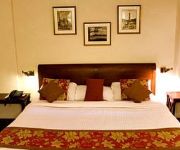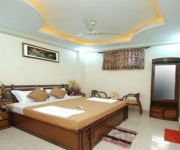Facts and Data
Webpages:
Official Unesco Page
View photos from OUR PLACE the World Heritage collection
Basis Data:
Unesco World heritage since: 2007
Size of heritage: 49 ha
- Buffer zone: 43 ha
Coordinates:
Longitude: 77,241°
Latitude: 28,656°
Summary
The Red Fort Complex was built as the palace fort of Shahjahanabad – the new capital of the fifth Mughal Emperor of India, Shah Jahan. Named for its massive enclosing walls of red sandstone, it is adjacent to an older fort, the Salimgarh, built by Islam Shah Suri in 1546, with which it forms the Red Fort Complex. The private apartments consist of a row of pavilions connected by a continuous water channel, known as the Nahr-i-Behisht (Stream of Paradise). The Red Fort is considered to represent the zenith of Mughal creativity which, under the Shah Jahan, was brought to a new level of refinement. The planning of the palace is based on Islamic prototypes, but each pavilion reveals architectural elements typical of Mughal building, reflecting a fusion of Persian, Timurid and Hindu traditions The Red Fort’s innovative planning and architectural style, including the garden design, strongly influenced later buildings and gardens in Rajasthan, Delhi, Agra and further afield.
Location on Map
Show bigger map on Openstreetmap
Red Fort Complex: A Historic Marvel in New Delhi
The Red Fort Complex, located in the heart of New Delhi, India, is a UNESCO World Heritage site that stands as a testament to the grandeur and architectural brilliance of the Mughal era. This magnificent fortress, also known as Lal Qila, has witnessed centuries of history and continues to be a symbol of India's rich cultural heritage.
History
The construction of the Red Fort Complex began in 1638 under the reign of Emperor Shah Jahan, the fifth Mughal emperor. It took nearly a decade to complete this architectural marvel, which was intended to serve as the new capital of the Mughal Empire. The fort was strategically built on the banks of the Yamuna River, providing a natural defense and a stunning view.
For over two centuries, the Red Fort Complex served as the main residence of the Mughal emperors, witnessing the rise and fall of their dynasty. It was the center of political power and a symbol of the empire's grandeur. The fort also served as a venue for various ceremonies, including the famous annual celebrations of the emperor's birthday, known as the "Peacock Throne."
However, the fort's glory was short-lived. In 1857, during the Indian Rebellion against British rule, the Red Fort Complex was captured by the British forces. They repurposed it as a military garrison and made significant alterations to the original structure. The British also looted many precious artifacts and jewels from the fort, diminishing its splendor.
Current State
Today, the Red Fort Complex stands as a magnificent reminder of India's rich history and architectural brilliance. Spread over an area of 254.67 acres, the fort is a harmonious blend of Persian, Timurid, and Indian architectural styles. Its red sandstone walls, reaching a height of 33 meters, enclose a sprawling complex of palaces, gardens, and pavilions.
Entering through the Lahore Gate, visitors are greeted by the Chatta Chowk, a bustling market that once housed the royal artisans and craftsmen. The main attractions within the fort include the Diwan-i-Aam (Hall of Public Audience), Diwan-i-Khas (Hall of Private Audience), and the stunning Rang Mahal (Palace of Colors).
The fort also houses several museums that showcase the rich history and culture of India. The Archaeological Museum displays a vast collection of artifacts, including weapons, paintings, and textiles from the Mughal era. The Indian War Memorial Museum, located within the fort, pays homage to the Indian soldiers who sacrificed their lives during various wars.
Every year on Independence Day, the Prime Minister of India hoists the national flag at the Red Fort Complex, followed by a speech addressing the nation. This tradition has been carried out since India gained independence in 1947, making the fort an iconic symbol of India's freedom struggle.
Despite the passage of time and the impact of colonial rule, the Red Fort Complex remains a majestic architectural masterpiece. Its historical significance, stunning architecture, and cultural importance make it a must-visit destination for tourists and a source of pride for the people of India.
Hotels and places to stay
Maidens Hotel
WelcomHeritage Haveli Dharampura
Hotel Al Gulzar
Broadway
Hotel Goodluck
Hotel Tourist
Hotel Guruvas Inn
Hotel Arina inn
TIRANT HOTEL
Grand Plaza Hotel & Cafe
Videos from the area
Videos provided by Youtube are under the copyright of their owners.
















